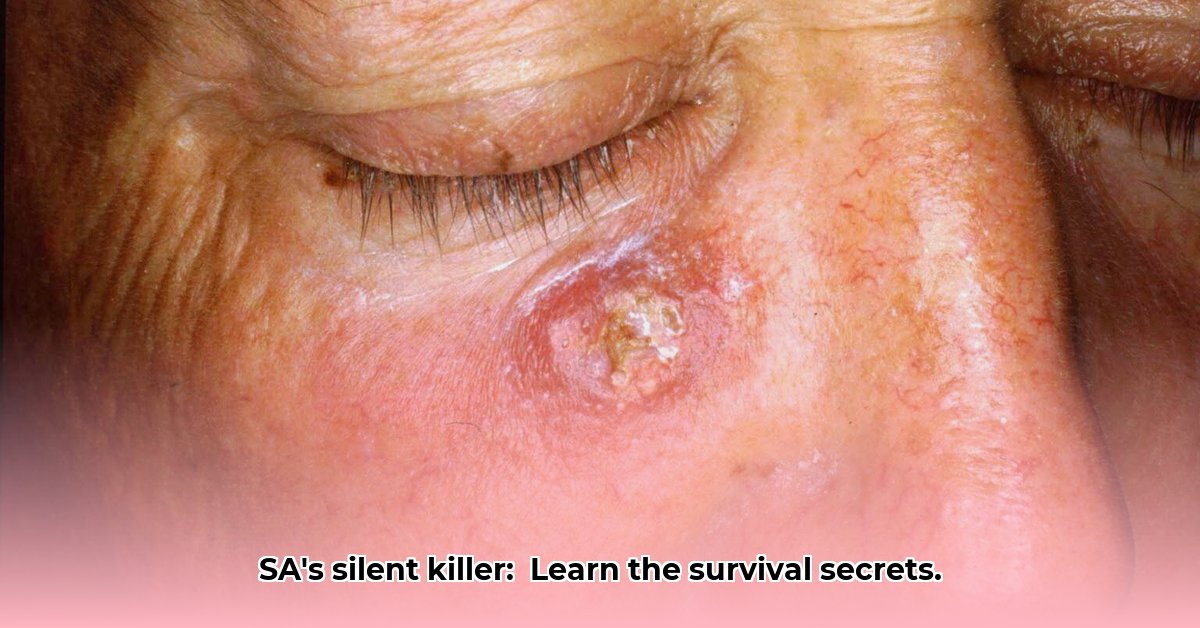
Understanding Plaveiselcelcarcinoom (Squamous Cell Carcinoma) in South Africa
Plaveiselcelcarcinoom, or squamous cell carcinoma (SCC), is a type of skin cancer that starts in the squamous cells – the thin, flat cells forming the outer layer of your skin. While common worldwide, its prevalence in South Africa remains a significant concern, largely due to our high levels of ultraviolet (UV) radiation. This article provides crucial information on SCC prevention and early detection strategies within the South African context.
Risk Factors for Squamous Cell Carcinoma in South Africa
Several factors increase your risk of developing SCC. The most prominent is prolonged exposure to the strong South African sun. Repeated sunburns, especially during childhood, significantly increase your risk. Other risk factors include:
- Genetics: A family history of skin cancer substantially elevates your risk.
- Lifestyle: Smoking and other habits that weaken your immune system can also play a part.
- Skin Type: Individuals with lighter skin tones are generally more susceptible.
However, significant knowledge gaps exist regarding the interplay of these factors within specific South African communities. Further research is needed, particularly investigating the influence of air pollution, altitude, and other environmental factors unique to our country. Our current understanding is often based on international studies, requiring careful consideration when applied to the South African context.
Symptoms and Diagnosis of Squamous Cell Carcinoma
SCC can manifest in various ways, often initially presenting as:
- A persistent sore that doesn’t heal.
- A firm, reddish lump or nodule.
- A scaly, crusted, or bleeding area.
- A growth that resembles a wart.
Early detection is vital. If you notice any unusual skin changes, consult a dermatologist. Diagnosis typically involves a biopsy, where a small skin sample is examined under a microscope.
Treatment Strategies for Squamous Cell Carcinoma
Treatment options depend on the SCC's size, location, and stage of development. Common approaches include:
- Surgery: Surgical removal of the cancerous tissue is frequently used, particularly in early-stage cases.
- Radiation Therapy: High-energy beams target and destroy cancer cells.
- Other Treatments: In advanced cases, additional therapies might be necessary.
Early detection dramatically improves treatment success rates. Regular check-ups are strongly recommended.
Prevention of Squamous Cell Carcinoma: A South African Approach
Prevention is key in combating SCC. The following strategies are crucial:
Sun Protection: Regularly apply a broad-spectrum sunscreen with an SPF of 30 or higher, especially between 10 am and 4 pm. Reapply frequently, particularly after swimming or sweating. Wear protective clothing – long sleeves, pants, a wide-brimmed hat, and UV-blocking sunglasses. Seek shade whenever possible.
Regular Self-Exams: Conduct monthly skin checks, familiarising yourself with your skin's normal appearance. Promptly report any unusual changes to your doctor.
Professional Skin Checks: Annual professional skin checks are recommended, especially for individuals with a family history of skin cancer or significant sun exposure.
Healthy Lifestyle Choices: Maintaining a healthy lifestyle, including not smoking, can contribute to overall health and potentially reduce cancer risk.
Conclusion: Proactive Steps for Better Skin Health
Squamous cell carcinoma is a serious concern in South Africa, but early detection and prevention are powerful tools in combating it. By taking proactive steps, such as diligent sun protection and regular self-skin examinations, you can significantly reduce your risk and protect your health. Our understanding of SCC is constantly evolving; ongoing research in the South African context is vital for developing more targeted prevention and treatment strategies.
References
[1] Skin Cancer Foundation of South Africa. https://skincancerfoundation.co.za/patient-information/skin-cancer-prevention/
(Note: Due to limitations in readily available data specifically addressing SCC in South Africa, this article incorporates information from international sources. Further research is needed to fully quantify the prevalence and risk factors specific to various South African communities.)